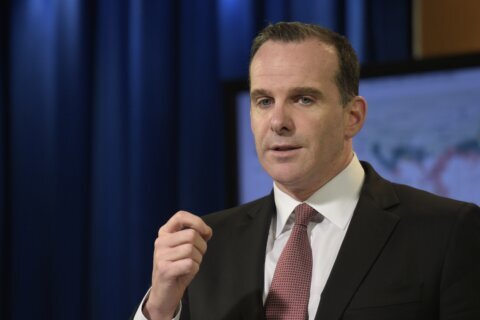Exchange-traded funds, better known as ETFs, are a staple of modern investing. They are so prominent today that they seem like they’ve been around forever, but, in reality, they’re less than 35 years old. The very first retail ETF was introduced to the investing public in January 1993. It was the SPDR S&P 500 ETF Trust (ticker: SPY), and the launch of that fund changed investing forever.
[Sign up for stock news with our Invested newsletter.]
The popularity of ETFs is due to their versatility and convenience. ETFs provide investors with a relatively low-cost way to achieve broad market diversification and get professional management in a single security that’s highly liquid and very easy to trade.
ETFs offer a wide range of investing options. There are more than 3,000 ETFs trading on U.S. exchanges and they cover almost any asset class and investing strategy an investor could ask for. In other words, there’s an ETF out there for practically every investor. That, of course, includes investors looking for a high and dependable current income plus the potential for capital appreciation.
High-dividend ETFs can benefit all investors, but are particularly attractive to retired people and others who depend on investment income to defray current expenses, but who also need growth to keep pace with inflation.
If you are interested in funds that consistently pay excellent dividends and also have the potential to grow substantially over the long run, check out this list of seven high-dividend ETFs to buy in today’s market:
| ETF | Expense Ratio | Trailing 12-Month Dividend Yield* |
| Invesco Preferred ETF (PGX) | 0.50% | 6.1% |
| VanEck BDC Income ETF (BIZD) | 0.42%** | 10.9% |
| SPDR Portfolio S&P 500 High Dividend ETF (SPYD) | 0.07% | 4.3% |
| Invesco High Yield Equity Dividend Achievers ETF (PEY) | 0.52% | 4.7% |
| iShares 20+ Year Treasury Bond Buywrite Strategy ETF (TLTW) | 0.35% | 15.5% |
| Alerian MLP ETF (AMLP) | 0.85% | 7.3% |
| SPDR Blackstone High Income ETF (HYBL) | 0.70% | 8.2% |
*As of Aug. 27 market close.**When accounting for acquired fund fees and expenses, the total expense ratio is 11.17%.
Invesco Preferred ETF (PGX)
PGX is a $4 billion index ETF based on the ICE BofAML Core Plus Fixed Rate Preferred Securities Index. The fund has a reasonable expense ratio of 0.50%, which means it will faithfully track the performance of its benchmark after those expenses are accounted for.
The index was designed to mirror the performance of U.S.-traded, dollar-denominated preferred stocks that pay a fixed, rather than a variable, dividend. This fund will buy preferred stocks that are less than investment grade but they do not buy any security that has a credit rating less than B3, based on the average ratings of the three major rating agencies.
PGX does not strictly replicate the index. Instead, it uses a method known in the index industry as sampling. This simply means it buys a smaller but still representative sample of the stocks in the index, but it buys them in the correct proportions to effectively match the index’s performance.
Preferred stock ETFs have income as a primary objective but, when interest rates fall — as many experts predict they are about to do — these funds can appreciate significantly.
Expense ratio: 0.50% Trailing 12-month yield: 6.1%
VanEck BDC Income ETF (BIZD)
The $1 billion ETF, BIZD, is designed to reflect the overall performance of business development companies, or BDCs, that are incorporated in the U.S. and listed on major stock exchanges. The fund seeks to achieve its objective by tracking the MVIS US Business Development Company Index.
A BDC is a specialized kind of investment company that lends money to small and medium public and private companies, many of which are funded by venture capital. A BDC ETF such as BIZD is an excellent way for investors to earn exceptionally high dividend income while gaining exposure to the private debt and private equity markets.
The fund, like the index, is capitalization-weighted, meaning companies with larger market caps receive a greater allocation of funds and will have a larger influence on the fund’s performance.
BIZD is primarily an income fund but the shares can appreciate when market conditions are right. VanEck reports that as of July 31, BIZD has achieved five-year annualized returns of 11.4% based on NAV.
Expense ratio: 0.42% (this is before accounting for indirect expenses; after accounting for indirect expenses, the fund’s expense ratio is 11.17%) Trailing 12-month yield: 10.9%
SPDR Portfolio S&P 500 High Dividend ETF (SPYD)
SPYD is a variation on SPY, which, as mentioned above, was the first ETF made available to retail investors. SPYD is an ETF with more than $6 billion in assets. The fund is designed to match the S&P 500 High Dividend Index. That unique index comprises the 80 highest-yielding stocks in the S&P 500.
Cost-conscious investors will be pleased to learn that SPYD has an exceedingly low expense ratio of just 0.07%. This low cost structure ensures that the fund very closely tracks the performance of its benchmark.
This is an ideal fund for people looking for a true balance between income and growth potential. SPYD has a track record of providing excellent, long-term capital appreciation while distributing a higher dividend income than its peers in the large-cap space.
Equity investors can feel confident about including SPYD as a core portfolio holding.
Expense ratio: 0.07% Trailing 12-month yield: 4.3%
Invesco High Yield Equity Dividend Achievers ETF (PEY)
Dividend-growth investing is a straightforward investment strategy based on the simple premise that if a company grows its dividend, the stock price will generally follow. PEY is a $1.2 billion index ETF that’s a natural fit for dividend-growth investors.
The fund is designed to mirror the Nasdaq Dividend Achievers 50 Index, a well-known benchmark comprising the 50 highest-yielding stocks in the larger Dividend Achievers Select Index. Both indexes are made up of U.S. stocks that have increased their annual dividend every year for at least 10 consecutive years.
The investment rationale behind PEY is the fact that it invests in stocks considered to be on a sound financial footing. If a company can afford to raise its dividend, it means company management is confident in the future. In short, investors can rely on the stability of the stocks in the PEY portfolio.
PEY is not a low-cost ETF but, with an expense ratio of 0.52%, it is reasonably priced.
Expense ratio: 0.52% Trailing 12-month yield: 4.7%
[READ: 7 of the Best Fidelity Bond Funds to Buy for Steady Income]
iShares 20+ Year Treasury Bond Buywrite Strategy ETF (TLTW)
The price of long-term treasury bonds fluctuates with the fixed-income market but, because their interest and principle are backed by the U.S. government, they are considered a fairly conservative investment. TLTW is a unique, $986 million ETF that takes a more aggressive approach to that conservative asset class.
TLTW mirrors the CBOE TLT 2% OTM Buywrite Index, which is a one-of-a-kind index that was designed specifically to serve as a benchmark to this fund.
TLTW holds shares of the iShares 20+ Treasury Bond ETF (TLT) and it earns income in two ways. First, it collects dividends on its TLT holdings. Because TLT has a current 12-month trailing yield of 3.8% and there is over $50 billion in the fund, that represents a significant cash flow. Secondly, TLTW collects premium income by continuously selling covered calls against its TLT shares.
Because the market is expecting rates to fall soon and, as a consequence, drive up the price of TLT, the calls TLTW is selling in this environment are commanding very high premiums. That accounts for the extraordinary current yield of this ETF.
Expense ratio: 0.35% Trailing 12-month yield: 15.5%
Alerian MLP ETF (AMLP)
AMLP invests in an asset class called master limited partnerships, or MLPs. Considering that MLPs are not a traditional security, the $9 billion in assets in AMLP is quite impressive.
AMLP is an index ETF that follows the Alerian MLP Infrastructure Index. The index is made up of MLPs that operate in the midstream segment of the oil and natural gas energy industry. In energy industry parlance, midstream just means companies that earn their revenue from the transportation, storage and refining of oil and gas.
Investors should be aware that the fund is cap-weighted, with some adjustments made for the public share float. This means larger companies with good liquidity will have a greater impact on the performance of the index.
MLPs are excellent income vehicles because, like real estate investment trusts and BDCs, they avoid taxation on the corporate level and are able to distribute more income to shareholders. That said, they can appreciate in value when energy prices are rising.
MLPs are specialized securities that require expertise to trade effectively. This accounts, in part, for the relatively high, 0.85% expense ratio of the fund.
Expense ratio: 0.85% Trailing 12-month yield: 7.3%
SPDR Blackstone High Income ETF (HYBL)
HYBL is a high-yield bond fund. Some investors will recall that high-yield bonds are also referred to as junk bonds, but the professional management and broad diversification of HYBL should give confidence to investors who might be considering this fund.
The fund does not invest exclusively in high-yield corporate debt. HYBL also buys and holds senior corporate loans and collateralized loan obligations, also known as CLOs. A CLO is a large pool of individual corporate loans that are collateralized and made into bonds by Wall Street investment bankers. Most retail investors will never own a CLO, but they are very popular with institutional investors such as insurance companies and pension funds.
While the fund uses a “top-down” approach to determine which asset classes to focus its portfolio on, when buying the individual securities themselves, HYBL uses a bottom-up security selection process. That means the portfolio managers at State Street Global Advisors who run HYBL consider the economy and big picture market factors for asset allocation, but pick individual bonds based on fundamental credit research. This hands-on management style accounts, in part, for the 0.70% expense ratio of this fund.
Expense ratio: 0.70% Trailing 12-month yield: 8.2%
More from U.S. News
9 Best ETFs to Buy for a Recession
2024’s 10 Worst-Performing Stocks
7 Best Solar Stocks to Buy Now
7 Best High-Dividend ETFs to Buy Today originally appeared on usnews.com
Update 08/28/24: This story was previously published at an earlier date and has been updated with new information.







